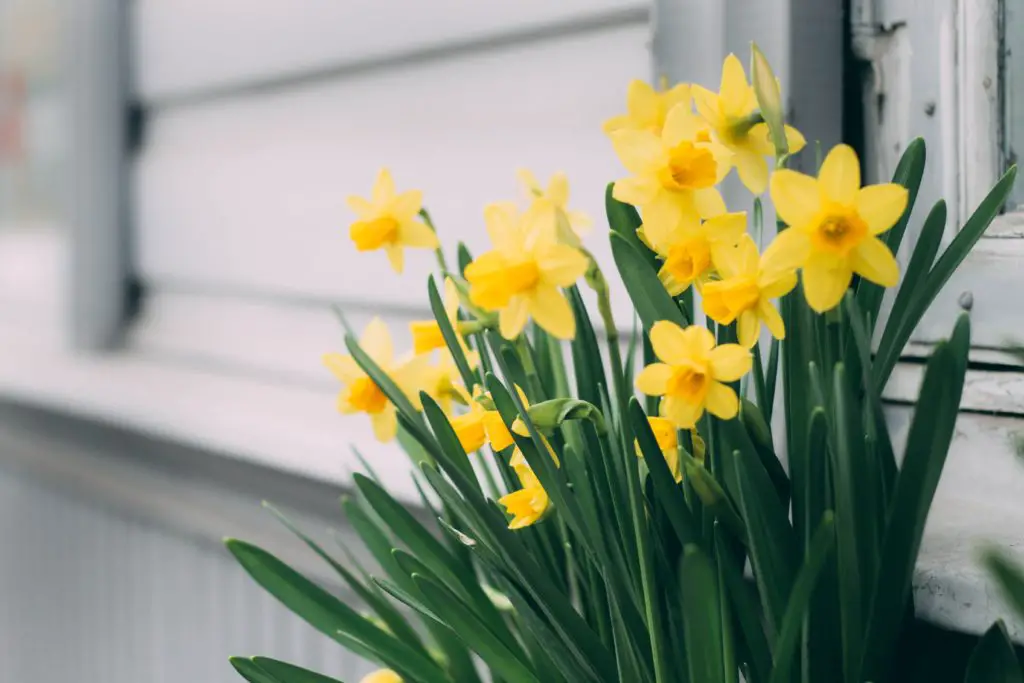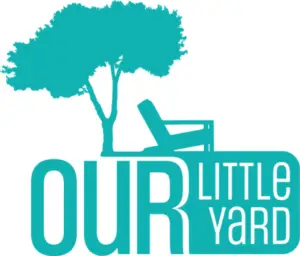One of my favorite things to see in the early months of the year are daffodils as they are usually the first signs that Spring has arrived. Daffodils fill our senses with their sweet aroma and bright yellow colors and let us know the seasons are changing. Big patches of green with pretty yellow blooms are such a welcome sight, but what happens after the blooms die and fall off? Many people do not like the look of the leaves that are left behind and wonder if it is okay to cut them down.
After daffodils have bloomed, DO NOT cut them back until they begin to die on their own. During this time, the plants will store energy from the sunlight in their bulbs for the next season. If you cut them down before they die on their own, they may not be as healthy or bloom the following year. Usually, it takes around 6 weeks for the plants to begin dying and turning yellow. At this time, it is okay to cut them back.

How to cut back daffodils
When your daffodil plants have begun to die, you can cut off all parts of the plant at ground level. Simply take some garden shears, gather all of the dead foliage in one hand and snip them all at the base. Be sure not to pull the stems too hard, as this may also pull the bulb of the plant out of the ground. If the bulb is left in the ground, then the daffodil will come back year after year without any replanting.
Be sure not to pull the stems too hard, as this may also pull the bulb of the plant out of the ground
It is also best to remove all the dead plant material from the area to ensure that the debris does not affect watering or sunlight in the area. There is no need to dig up the bulbs for the winter as long as they are in an area that drains well and does not hold water that may freeze.
What happens if you cut back daffodils too early?
If you cut back your daffodils as soon as they finish blooming to clean up your garden, you may not notice the effects immediately in the next year. Over time, however, you will begin to notice fewer plants and less blooms on the ones that you do have. Planting in clusters can help the plants look more full and less “messy” in your garden after the beautiful yellow blooms have died.
Do daffodils need fertilizer?
You can have great success with daffodils year after year without applying any fertilizer. However, if you want to improve the quality of your daffodils it is recommended to apply fertilizer in early spring as you begin to see shoots emerging from the ground.
Daffodils are pretty hearty and even without much care will continue to come back year after year as long as the bulbs are left undisturbed. However, after several years you will begin to notice a lack in the quality and number of blooms you see each spring. For that reason, it’s a good idea to fertilize if you enjoy those beautiful yellow blooms.
Overall, daffodils are a very easy and low maintenance flower to grow and fertilizer is not necessary as long as you don’t cut the plant back too early. Those six weeks that the plant remains green are very important for storing energy from the sunlight for the blooms in the following year.
Do daffodils spread?
Daffodils can spread, but maybe not how you expected. Typically the spreading of daffodils that you will see in your garden is due to bulb division that happens underground. A bulb will produce another bulb usually attached to itself, which will start producing its own blooms. This is why you may find the need to divide your daffodils every 3 – 5 years as they begin to get more dense.
Another way that daffodils spread is through seed production if they are pollinated. This is usually a much slower process and often requires some help in planting the seeds. It also can take several years from the time a seed is planted to producing a plant.
If your daffodils are spreading fast, this is most likely due to bulb division and will simply require digging up some of your bulbs and moving them to another location. You can also store the bulbs in a cool dark place for later planting.
Leave them be
So next time you have the urge to cut back all the remaining green plants left behind after your favorite yellow blooms, don’t give in to the temptation! Leaving your plants for six weeks will make a significant impact on the blooms in the next spring season.
